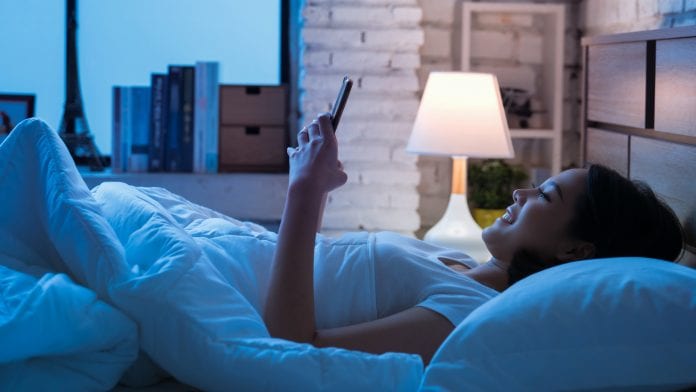
Scientists uncover how certain retinal cells respond to artificial illumination – discovering screen time exposure results in sleep disruption.
For many individuals, the amount of screen time, whether it is via computers, phones, or iPads, constitutes many hours and can often disrupt sleep. Now, Salk Institute, USA, researchers have identified how certain cells in the eye process ambient light and reset our internal clocks, the daily cycles of physiological processes also known as the circadian rhythm. When these cells are exposed to artificial illumination late into the night, our internal clocks can get confused, resulting in a host of health issues.
The research has the potential of leading to new treatments for migraines, insomnia, jet lag and circadian rhythm disorders, all of which have been tied to cognitive dysfunction, cancer, obesity, insulin resistance, metabolic syndrome and more.
What can artificial illumination do to our eyes?
Salk Professor Satchin Panda, senior author of the study, explains: “We are continuously exposed to artificial light, whether from screen time, spending the day indoors or staying awake late at night.”
“This lifestyle causes disruptions to our circadian rhythms and has deleterious consequences on health.”
A sensory membrane called the retina, located behind the eyes, has an innermost layer containing a tiny subpopulation of light-sensitive cells that operate like pixels in a digital camera. When these cells are exposed to ongoing light such as excessive screen time, the protein, melanopsin, continually regenerates within them, signalling levels of ambient light directly to the brain to regulate consciousness, sleep and alertness. Melanopsin plays a pivotal role in synchronizing the internal clock within an individual after 10 minutes of illumination and, under bright light, suppresses the hormone melatonin, responsible for regulating sleep.
“Compared to other light-sensing cells in the eye, melanopsin cells respond as long as the light lasts, or even a few seconds longer,” says Ludovic Mure, staff scientist and first author of the paper.
“That’s critical, because our circadian clocks are designed to respond only to prolonged illumination.”
Details of the study
Salk researchers used molecular tools to switch on production of melanopsin and discovered that some of these cells have the ability to sustain light responses when exposed to repeated long pulses of light, such as screen time exposure from mobile devices, TVs etc, while others become desensitized.
Conventional wisdom has held that proteins called arrestins, which stop the activity of certain receptors, should halt cells’ photosensitive response within seconds of lights coming on. The researchers were surprised to find that arrestins are in fact necessary for melanopsin to continue responding to prolonged illumination.
In mice lacking either version of the arrestin protein (beta arrestin 1 and beta arrestin 2), the melanopsin-producing retinal cells failed to sustain their sensitivity to light under prolonged illumination. The reason, it turns out, is that arrestin helps melanopsin regenerate in the retinal cells.
Panda adds: “Our study suggests the two arrestins accomplish regeneration of melanopsin in a peculiar way.”
“One arrestin does its conventional job of arresting the response, and the other helps the melanopsin protein reload its retinal light-sensing co-factor. When these two steps are done in quick succession, the cell appears to respond continuously to light.”
Unlocking screen time
By better understanding the interactions of melanopsin in the body and how the eyes react to light, the researchers hope to find new targets to counter skewed circadian rhythms due to, for example, artificial illumination. Previously, Panda’s research team discovered that chemicals called opsinamides could block melanopsin’s activity in mice without affecting their vision, offering a potential therapeutic avenue to address hypersensitivity to light experienced by migraine sufferers.
Moving forward, the researchers aim to find ways to influence melanopsin to reset the internal clocks and help with insomnia.









